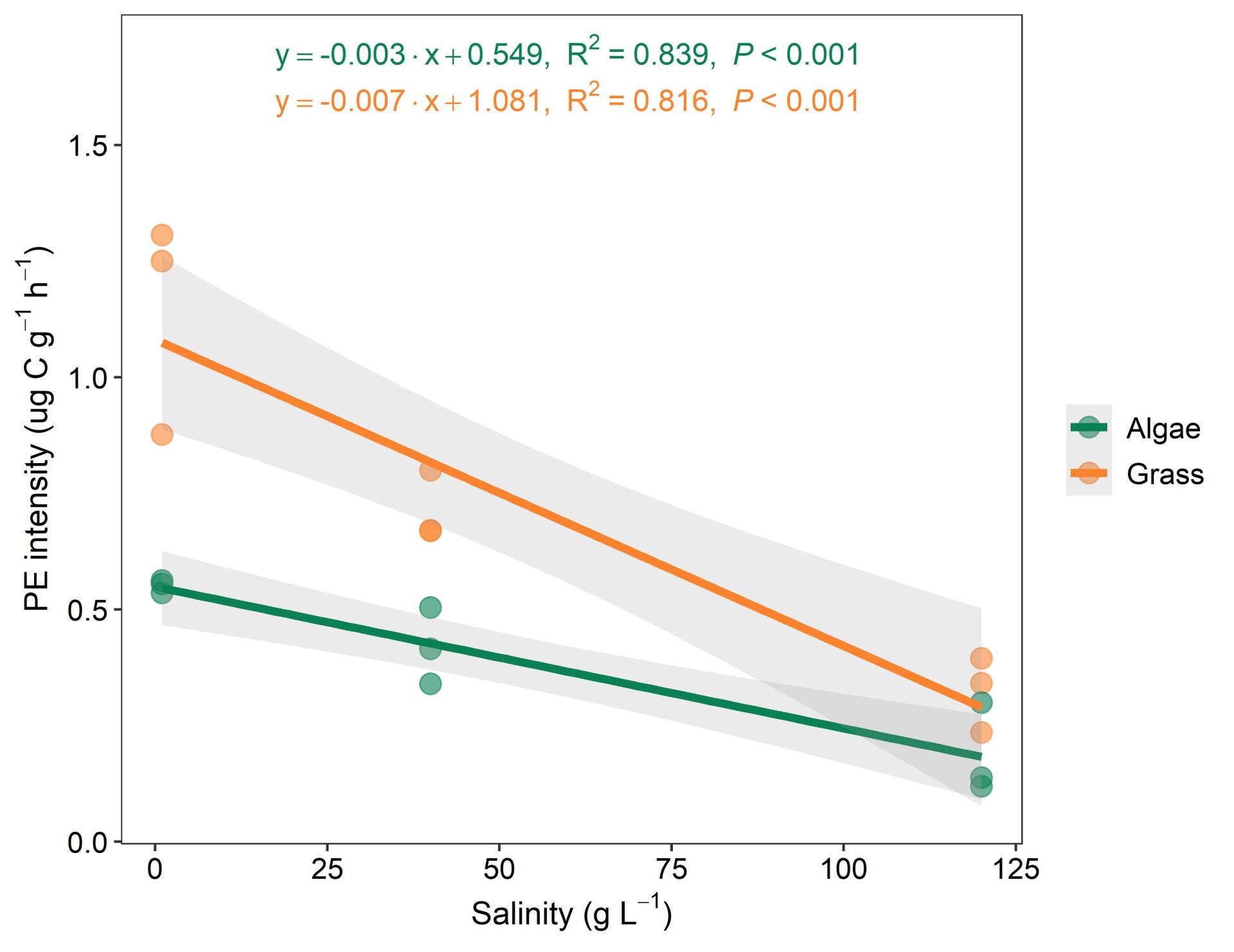Prof. JIANG Hongchen, Dr.YANG Jian and Dr. HAN Mingxian from the State Key Laboratory of Biogeology and Environmental Geology found that positive priming effects induced by allochthonous and autochthonous organic matter input occur in the lake sediments with different salinity. The results are published in Geophysical Research Letters. The abstract of the article is as follows.
Global warming changes the salinity of lakes and the load of allochthonous and autochthonous organic matter (OM) input into lakes. Yet, there is a knowledge gap about how allochthonous and autochthonous organic matter input affects microbial mineralization of organic carbon in lake sediments with different salinity. We find that allochthonous and autochthonous OM input can induce positive priming effect (PE) in saline lakes, which decreased with increasing salinity of saline lakes. PE intensity induced by allochthonous OM is significantly higher than that by algal OM. We hypothesize that allochthonous and autochthonous OM input will accelerate the mineralization of native OM in saline lakes, allochthonous OM exhibited stronger influence on microbial mineralization of native OM than autochthonous OM. Bacterial taxa affiliated with Actinomycetia, Alphaproteobacteria, Bacilli, Bacteroidia, Clostridia and Gammaproteobacteria played important roles in driving PE generation in the studied sediments. Our finding suggested that the priming effects induced by allochthonous and autochthonous OM should be considered in saline lakes that intensively influenced by climate change. Consequently, allochthonous and autochthonous OM input may affect the storage and stability of OM in saline lakes.

Fig 1. Boxplots showing the range of CO2 production rates measured on the 1st, 5th, 7th and 15th day in the studied sediment microcosms with different salinity. Wilcoxon rank-sum tests: **p< 0.01, ***p<0.001, NSp> 0.05

Fig 2. Linear relationship between the priming effect (PE) intensities (on the 7th day) induced by the addition of algal and grass organic matter and the salinity of the studied sediment microcosms.